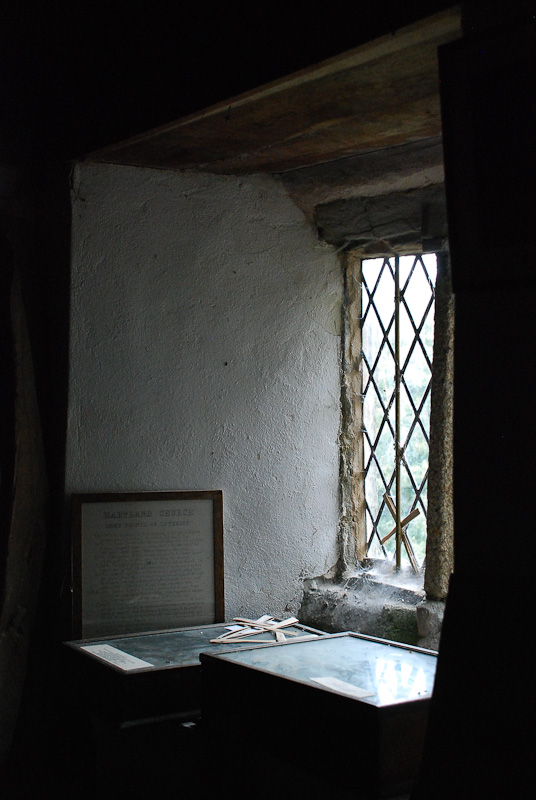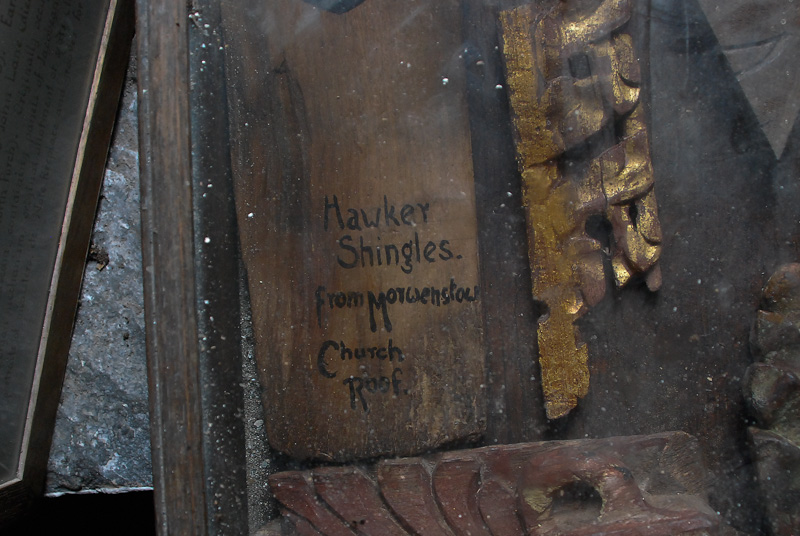THE CELL BY THE SEA
How wildly sweet by Hartland Tower,
The thrilling voice of prayer:
A seraph, from his cloudy bower,
Might lean to listen there.
For time, and place, and storied days,
To that great fane have given
Hues that might win an angel’s gaze,
‘Mid scenery of heaven.
Above — the ocean breezes sweep,
With footsteps firm and free:
Around — the mountains guard the deep,
Beneath — the wide, wide sea.
Enter! the arching roofs expand,
Like vessels on the shore;
Inverted, when the fisher-band
Might tread their planks no more;
But reared on high in that stern form,
Lest faithless hearts forget
The men that braved the ancient storm,
And hauled the early net.
The tracery of a quaint old time
Still weaves the chancel screen:
And tombs, with many a broken rhyme,
Suit well this simple scene.
A Saxon font, with baptism bright,
The womb of mystic birth,
An altar, where, in angels’ sight,
Their Lord descends to earth.
Here glides the spirit of the psalm,
Here breathes the soul of prayer:
The awful church — so hushed — so calm —
Ah! surely God is there.
And lives no legend on the wall?
No theme of former men?
A shape to rise at fancy’s call,
And sink in graves again?
Yes! there, through yonder portal stone,
With whisper’d words they tell,
How once the monk, with name unknown,
Prepared that silent cell.
He came with griefs that shunned the light,
With vows long breathed in vain:
Those arches heard, at dead of night,
The lash, the shriek, the pain;
The prayer that rose and fell in tears,
The sob, the bursting sigh:
Till woke, with agony of years,
The exceeding bitter cry.
This lasted long — as life will wear,
E’en though in anguish nurs’d —
Few think what human hearts can bear
Before their sinews burst.
It lasted long — but not for aye:
The hour of freedom came:
In that dim niche the stranger lay
A cold and silent frame.
What sorrows shook the strong man’s soul,
What guilt was rankling there,
We know not: time may not unroll
The page of his despair.
He sleeps in yonder nameless ground,
A cross hath marked the stone;
Pray ye, his soul in death hath found
The peace to life unknown.
And if ye mourn that man of tears,
Take heed, lest ye too fall;
A day may mar the rest, that years
Shall seek but not recall.
Nor think that deserts soothe despair,
Or shame in cells is screen’d;
For Thought, the demon, will be there,
And Memory, the fiend.
Then waft, ye winds, this tale of fear,
Breathe it in hall and bower.
Till reckless hearts grow hushed to hear,
The Monk of Hartland Tower.
[Printed in Ecclesia, 1840, in Echoes From Old Cornwall, The Cornish Ballads, etc.]
* * * * *
St. Nectan’s, the parish church of Hartland, is situated between the town and Hartland Quay in the village of Stoke. The room above the north porch is traditionally known as Pope’s Chamber; the Pope in question being a local resident of that name. Access is via a steep and narrow stairway and the chamber contains an interesting collection of odds and ends, among which I was delighted to find a glass case with an oak shingle from the roof of Morwenstow church. Despite Hawker’s lively imaginings it seems doubtful that the place ever served as a monk’s cell – it contains a large fireplace and the atmosphere is more homely than ascetic. A leaflet that I picked up during our visit suggests that the chamber may have been used by a priest or sexton, and to store the parish armour in Elizabethan and Stuart times.
In the Life & Letters Byles includes an account of a visit made by Hawker and Charlotte in 1838, just over three years after their arrival in Morwenstow:
HARTLAND
“On the – of June 1838 Charlotte and I drove to Hartland. Day showery. Saw first Grave-ground and Church. The yard-paths clean, but the Vicar cherishes for his Horse the grain that grows from out the Bosoms of the Dead. No green and shaven mounds like my own Church Yard. By the Chancel door there is an Altar Tomb, an epitaph, but no surviving name – The Words ‘ Who art thou that judgest another man’s servant ? ‘ &c. ‘ Rejoice not against me, oh mine Enemy,’ &c. Legend. One of the Doctons of Docton smote his Son in ire with His Sword belt. The buckle struck him in the temple that he died. Hence Remorse evermore – hence the nameless Tomb – The fierce anticipation of reproach &c. Cf. and dl.
“Next the Church. The Screen nearly complete. On its upper ledge the Singers stood, within the tradition of one generation. The last Chancel Choir of which I ever found tracery in the West. The Roof of the Church painted thick with Stars in imitation of Heaven. I hence perceive why and whence our carved projections – they are all meant to be starry tokens to meet the lifted eye with memorials of Heaven.
” We ascended by a narrow stair of stone from the North Wall into a small low chamber, called still the Monk’s Room – it is an obvious cell. There lived a solitary man. There dwelt Thought as a Demon and Memory arrived in the garb of a Fiend. Long years, long years – the vigil of the night, the abstinence of the day, the solitary yell, the lonely psalm, the Mea Culpa of a goaded Mind. ‘Mother of God! why is thy face so like to hers I slew? O let my Hell burn now. Let those who torture come before the time’ and then ever and anon in the pauses of the public Mass, a sob, a wail, an echo from that Wall – a whisper from a Man to to his Mate, ‘It is the Monk.’ Kurie Eleeson. Ave Maria. Pater noster qui es.”
Life & Letters (p.54)
Text and photos © Angela Williams 2010, 2012



Comments
One response to “‘The Cell by the Sea’”
What great article. Originally coming from just down the road from ‘Moo’stowe’ I’m fascinated by this man and his legacy. Thanks for putting it up.